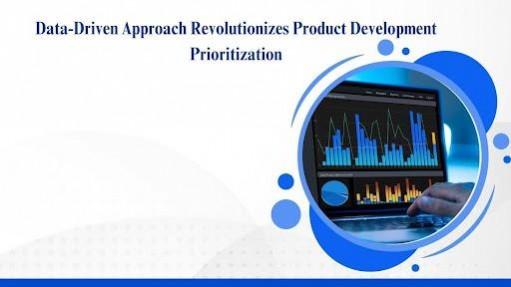Data-Driven Approach Revolutionizes Product Development Prioritization

Neeraj Kripalani has introduced an innovative algorithmic approach to product backlog prioritization that has achieved remarkable improvements in development efficiency and business outcomes. The research, published in a leading technology journal, presents a comprehensive framework that transforms how organizations handle feature requests and development priorities Product Development Prioritization.
The Power of Cross-Functional Integration
The breakthrough lies in the system’s ability to synthesize data from multiple organizational touchpoints. By integrating feedback from customer success, support, and sales teams, the algorithm generates data-driven prioritization decisions that align with both customer needs and business objectives. This integration has led to an impressive 85% accuracy rate in predicting high-impact feature requirements while reducing prioritization processing time by 83.5%. The system’s ability to process and analyze feedback from multiple sources, including support tickets, customer interviews, and usage analytics, ensures a comprehensive understanding of user needs.
Transformative Results Through Automation
The automated system revolutionized performance across multiple fronts. Feature adoption surged to 64%, demonstrating strong user acceptance and market fit. Sales cycles shortened by 28%, while alignment between product and sales teams reached 89%. The system significantly improved support operations, reducing feature-related tickets by 47%. This led to a 38% drop in escalations and a 52% improvement in first-contact resolutions. These metrics showcase the system’s comprehensive impact on organizational efficiency and customer satisfaction.
Smart Prioritization Mechanics
At the heart of the system is a sophisticated weighting mechanism that considers multiple factors in decision-making. The algorithm employs a multi-dimensional scoring matrix that evaluates customer impact, revenue potential, implementation complexity, and strategic alignment. This comprehensive approach ensures that development resources are allocated to features that deliver maximum value to both customers and the organization. The scoring system utilizes a normalized 0-100 scale for each criterion, with automated adjustments based on historical accuracy.
Breaking Down Silos
The framework tackles a fundamental software development challenge by harmonizing diverse stakeholder requirements. Through advanced natural language processing, it automatically analyzes support tickets to identify patterns in feature requests and user pain points. This data-driven methodology has dramatically improved organizational coordination, leading to a 73% decrease in conflicting feature requests. Additionally, mid-sprint priority changes dropped by 42%, showcasing enhanced stability in development cycles and better alignment across teams.
Economic Impact and Efficiency
The innovation delivered significant financial benefits across the development lifecycle. Development costs dropped by 31%, while critical features reached the market 45% faster than before. The system optimized resource allocation, achieving a 28% improvement in utilization rates. These efficiency gains resonated throughout the organization, enhancing stakeholder satisfaction across departments. Most notably, the improved development process strengthened customer relationships, boosting retention rates from 85% to an impressive 92%.
Future Possibilities
The system opens new horizons for product development optimization. Future enhancements could include artificial intelligence and machine learning integration for predictive prioritization, enabling real-time priority adjustments based on market dynamics and user behavior patterns. The framework also shows promise for adaptation across different industry verticals and organization sizes, with potential applications in various software development environments.
Implementation Strategy
Implementation challenges were addressed through a phased approach, including regular calibration of weighting factors and establishment of cross-functional steering committees. The solution included continuous feedback loops and comprehensive training programs, ensuring smooth adoption and ongoing optimization of the system. This methodical approach helped overcome initial resistance to automated decision-making and data quality inconsistencies, leading to successful adoption across different organizational levels.
In conclusion, this groundbreaking work by Neeraj Kripalani represents a significant advancement in product development methodology. The framework not only streamlines decision-making processes but also creates a more responsive and efficient product development ecosystem that benefits all stakeholders, setting new standards for product development optimization in the software industry.
